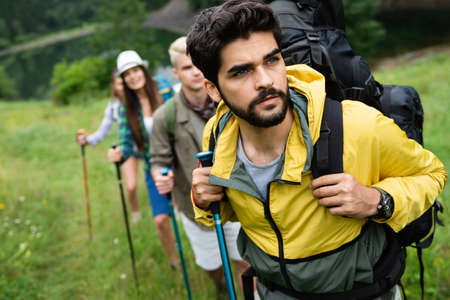1. Getting Trail-Ready: Preparing Your Body and Mind
If you dream of wandering through the vibrant valleys of Himachal or tracing the ancient paths of Sahyadris, preparing both body and mind is your first step. Trekking in India is not just a test of strength—it’s a soulful journey, calling for harmony between endurance, flexibility, and inner calm. Start by embracing yoga, our country’s age-old gift to the world. Simple asanas like Tadasana (Mountain Pose), Trikonasana (Triangle Pose), and Vrikshasana (Tree Pose) help build balance and stability, vital for uneven Indian trails. Integrate pranayama—deep breathing exercises like Anulom Vilom or Kapalabhati. These not only increase lung capacity but also bring clarity and resilience when the going gets tough. For stamina, nothing beats a brisk morning walk or jog in your local park, gradually increasing distance to mimic trek conditions. Remember to listen to your body—India’s diverse terrain demands patience, whether you’re scaling the Western Ghats or strolling through tea gardens in Nilgiris. Give yourself time; build strength slowly with regular practice. Just as every pilgrimage begins with a single step, let your preparation be mindful and heartful—honouring both your physical limits and your spirit’s longing for adventure.
2. Packing Smart: Essential Gear for Indian Climbs
When planning a trek across India’s diverse landscapes, smart packing is as important as physical preparation. The right gear ensures not only comfort but safety and enjoyment, whether you’re exploring the lush Western Ghats or the rugged terrains of Ladakh. Here’s a gentle guide to choosing trekking essentials tailored for Indian conditions, keeping in mind the unpredictable weather and unique trail demands.
Clothing: Dressing for the Indian Outdoors
In India, weather can change in a heartbeat—from sunny afternoons to sudden monsoon showers or chilly Himalayan winds. It’s wise to dress in layers and pick fabrics that breathe yet protect.
| Essential Clothing | Why It Matters | Local Tip |
|---|---|---|
| Sturdy Chappals / Trekking Shoes | Protects feet on rocky, uneven paths; prevents slips | Opt for closed shoes in forests, chappals for lighter treks |
| Quick-Dry T-shirts & Pants | Keeps sweat away; dries fast after rain or river crossings | Synthetic blends work better than cotton during monsoon |
| Rainproof Jacket / Poncho | Guards against sudden downpours, especially during June-September | A poncho covers backpack too—more practical in heavy rains |
| Lightweight Fleece / Sweater | Warmth for higher altitudes and cool evenings | Packed easily into a small pouch or daypack |
| Cotton Scarf / Bandana | Multi-purpose: sun protection, dust filter, cooling cloth | Commonly used by locals; easy to wash and dry overnight |
Hydration Solutions: Beating the Indian Heat & Humidity
The combination of heat, humidity, and altitude makes hydration crucial on Indian treks. Carrying clean water isn’t always possible, so consider:
- Reusable Water Bottles: Eco-friendly and sturdy for rough use.
- Water Purification Tablets/Filters: Essential if sourcing from streams or taps.
- ORS Sachets: Quick fix for dehydration—available at local pharmacies.
The Right Backpack: Balancing Comfort and Capacity
A well-fitted backpack eases your journey on long trails. For most Indian treks (1-4 days), a 30-40L pack is ideal. Look for padded straps, rain cover, and easy-access side pockets for snacks or water bottles. Consider local brands like Wildcraft or Decathlon—they offer affordable options designed for Indian weather and body types.
Packing Checklist for Indian Treks:
- Sunscreen & Sunglasses (for high UV zones)
- Trekking Pole (for steep climbs)
- Torch/Headlamp (power cuts are common in remote areas)
- Basic First Aid Kit with Indian medicines (paracetamol, ORS, pain balm)
Packing smart means thinking ahead—not just about the journey but also about the unpredictable beauty of India’s wild spaces. With thoughtful choices, every trek can become a soulful adventure under the open sky.

3. Local Wisdom: Food, Snacking & Hydration Tips
When it comes to trekking in India, our traditional food wisdom is a treasure trove. The right nourishment and hydration are as important as sturdy shoes or a well-packed backpack. Drawing from our roots can transform your trek into a more comfortable and energising journey.
Packing Power from Indian Kitchens
For many Indian trekkers, the humble paratha is much more than just a breakfast dish. Rolled with dry sabzi or simply layered with ghee and wrapped in foil, parathas make for perfect energy-packed meals on the trail. Not only are they filling, but they also stay fresh longer than most bread when packed carefully. Add to this a handful of roasted chana, peanuts, or mixed nuts—these traditional snacks provide protein, healthy fats, and sustained energy during those long climbs.
Smart Snacking on the Go
Snacking smartly can be your secret weapon against fatigue. Carrying ladoos made of jaggery and dry fruits, or simple murmura (puffed rice) mixed with spices, keeps your taste buds happy while providing quick energy. Many trekkers swear by homemade theplas, khakhras, or even idlis as lightweight, non-messy snacks that keep hunger at bay without weighing down your pack.
Hydration: The ORS Advantage & Natural Remedies
Indian summers and high-altitude treks can quickly lead to dehydration. While water is essential, carrying packets of Oral Rehydration Salts (ORS) offers an effective way to replenish lost electrolytes. Coconut water powder or lemon salt (nimbu-salt) sachets are also great for hydration with a familiar desi twist. Moreover, sipping on jeera (cumin) water or having small pieces of ginger handy helps soothe indigestion—a common issue faced by trekkers due to exertion and change in altitude.
Our homegrown remedies—like tulsi leaves for headaches or honey-ginger mixtures for sore throats—reflect the deep connection between nature and Indian wellness practices. By honouring these local traditions on your trek, you not only nourish your body but also carry forward a piece of your heritage with every step you take towards the summit.
4. Safety First: Navigating with Care in Indian Terrains
India’s vast and diverse landscapes—from the Western Ghats to the Himalayan foothills—offer trekkers stunning experiences, but also unique safety challenges. Prioritising your well-being is crucial for a rewarding journey. Here’s how you can trek safely and responsibly across Indian terrains.
Steps to Ensure Safety on Indian Treks
| Step | Description |
|---|---|
| 1. Plan Thoroughly | Study your route, understand terrain challenges, and check weather updates before departure. |
| 2. Group Trekking | Trekking in a group is highly recommended in India. There’s strength and safety in numbers—whether it’s dealing with sudden weather changes or medical emergencies. |
| 3. Inform Local Authorities | Notify local police stations or forest officials about your trekking plans, especially in remote regions. This is standard protocol in many Indian states and can be life-saving during emergencies. |
| 4. Carry Essential Contacts | Always have emergency contact numbers, including local rescue teams, on hand (offline as well as online). |
| 5. Pack a First Aid Kit | Your kit should address everything from minor cuts to altitude sickness, adapted to Indian conditions. |
Addressing Monsoon Conditions
The monsoon brings lush greenery but also slippery trails, landslides, and swollen rivers. If you’re trekking between June and September:
- Avoid crossing fast-flowing streams; water levels can rise suddenly.
- Packing waterproof gear is non-negotiable—raincoats, dry bags, and sturdy footwear are musts.
- Stay updated with regional weather alerts via IMD (India Meteorological Department) apps or websites.
- Avoid camping near riverbanks or steep slopes prone to landslides.
Wildlife Encounters: Coexisting Respectfully
Many Indian trekking trails pass through protected forests or wildlife corridors. To ensure harmony:
- Never approach or feed wild animals—maintain a safe distance.
- Make your presence known with gentle sounds; avoid startling wildlife.
- Carry a torch at night and store food securely to prevent attracting animals like bears or monkeys.
- If you spot elephants or big cats, stay calm, back away slowly, and follow local guides’ instructions strictly.
The Power of Community: Why Group Trekking Matters
Trekking together not only adds joy to the journey but ensures collective safety. In India’s remote trails, a group can:
- Support each other during medical situations or exhaustion.
- Deter potential threats from wildlife or strangers.
- Share navigation responsibilities and boost morale during tough stretches.
Quick Checklist Before You Set Out
- Route Map & Permits Ready?
- Local Authorities Informed?
- Emergency Numbers Saved?
- Packed for Weather & Wildlife?
- Trekking in a Group?
Trekking in India is a soulful experience—one that asks for respect towards nature, culture, and your own well-being. By taking these careful steps, you embrace both adventure and safety on every path you tread.
5. Sustainable Steps: Respecting Nature and Local Communities
As you prepare to trek across Indias diverse landscapes—from the mighty Himalayas to the lush Western Ghats—remember that every step you take leaves an imprint, not just on the trail but also on the communities and nature around you. Trekking, in our Indian ethos, is more than a physical journey; it’s a spiritual connection with the land and its people.
A Gentle Reminder: Trek Slow and Tread Lightly
In the rush to reach summits or complete circuits, we sometimes forget the true joy of trekking lies in slowing down. Take time to breathe in the fresh mountain air, listen to the call of birds, and absorb the wisdom of ancient trees. Walking slowly not only preserves your energy but also reduces impact on delicate trails, especially during monsoon or in high-altitude regions where paths can be fragile.
Avoiding Litter: Pack In, Pack Out
India’s pristine trekking routes are sadly becoming marred by plastic waste and discarded wrappers. Let us lead by example—carry reusable water bottles (a must-have gear for any trekker), avoid single-use plastics, and always pack out what you bring in. Many treks pass through villages where waste disposal facilities are minimal; your efforts in carrying back even small bits of litter make a big difference.
Supporting Local Mountain Guides
Hiring local guides is not just about finding your way—it’s about supporting livelihoods and gaining insights into local culture, flora, fauna, and stories passed down generations. Many communities rely on tourism for sustenance; when you choose a local guide or homestay, you help strengthen rural economies and foster deeper cultural exchanges.
Honouring Sacred Spaces
Many trekking trails in India pass near temples, shrines, or sacred groves revered by indigenous communities. Always remove shoes where required, dress modestly, and ask before taking photographs. Offer a silent prayer or simply acknowledge these spaces with respect—they are living testaments to India’s spiritual heritage.
Sustainable trekking is a conscious choice. It is our duty as Indian trekkers to nurture the mountains that nurture us—by moving gently, respecting communities, and leaving nothing behind but footprints and gratitude.
6. Recover & Reflect: Post-Trek Self Care
Nourish Your Body with Wholesome Indian Food
After a challenging trek across the rugged trails of the Western Ghats or the serene Himalayas, your body deserves special care. Traditional Indian meals are rich in nutrients and can aid recovery. Replenish your energy with dal chawal, khichdi, or sabudana khichdi — comfort foods that are easy on the stomach yet packed with protein and carbohydrates. Don’t forget to hydrate with nimbu paani or buttermilk, which help restore electrolytes lost during the trek.
Mindful Stretching for Gentle Recovery
Your muscles may feel tired and sore after days of trekking. Dedicate time to gentle stretching, focusing on your legs, back, and shoulders. Simple yoga asanas like Balasana (Child’s Pose), Tadasana (Mountain Pose), and Viparita Karani (Legs-Up-the-Wall Pose) can help you unwind and speed up recovery. Practice deep breathing or pranayama to calm your mind and rejuvenate your spirit.
Revisit Your Trekking Journey through Journaling
Trekking is not just a physical journey; it is also an inner voyage. Take time to reflect on your experiences by writing in a journal. Note down the challenges you overcame, the breathtaking views that touched your heart, and the kindness of fellow trekkers you met along the way. For many Indians, connecting with nature brings spiritual insight — let these moments find a place in your diary or even sketchbook. This mindful reflection helps create lasting memories and strengthens your bond with nature.
Cultivating a Meaningful Connection
Self-care goes beyond physical recovery. Call your trekking friends and share stories over chai, or post pictures online with thoughtful captions in Hindi or your regional language to inspire others. Let each trek become a stepping stone towards greater self-discovery and well-being.
Embrace Every Step of Your Trekking Experience
The journey does not end when you return home. With wholesome food, mindful stretches, and heartfelt reflection, you not only recover but grow stronger for your next adventure. Cherish every step — from preparation to recovery — as part of a beautiful journey that nurtures both body and soul.

